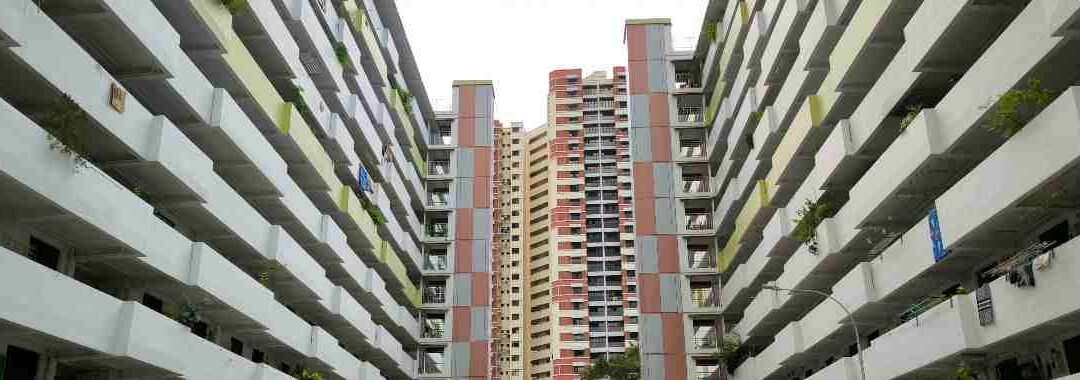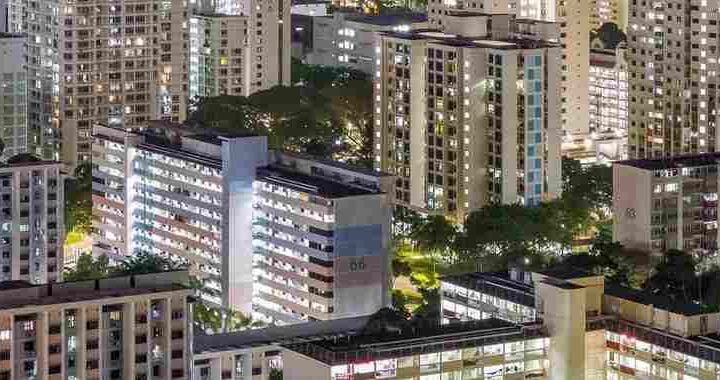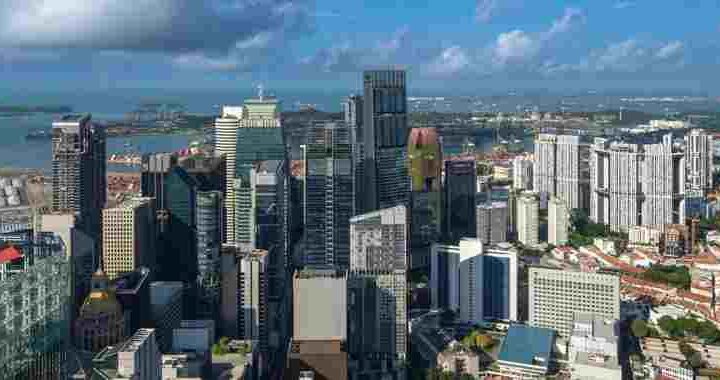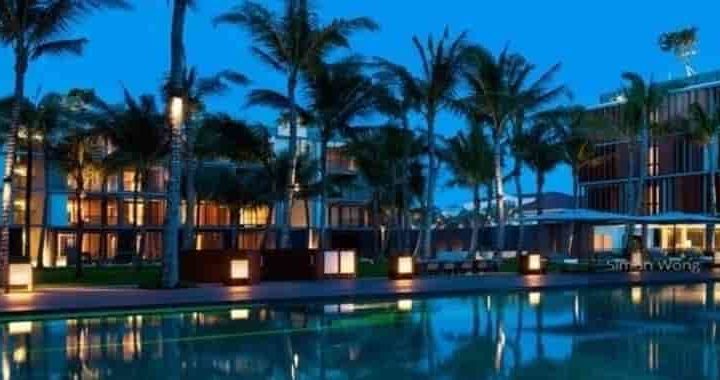- What is the Objective of VERS?
- Key Features of the VERS Framework
- How VERS Differs from SERS and Why It Matters for Homeowners
- How Will VERS Be Implemented in Singapore?
- Challenges and Complexities of VERS Implementation
- Lease Decay: Impact on HDB Flat Owners and Buyers
- Exit Strategies for Older HDB Flats (Beyond VERS)
- Conclusion: Planning for the Future - VERS, Retirement, and Asset Management
- FAQs on VERS (Voluntary Early Redevelopment Scheme)
Singapore has consistently transformed its urban landscape, a process evident in both its public and private housing sectors.
In the public housing sphere, this includes the introduction of SERS (Selective En bloc Redevelopment Scheme) in 1995. However, the scheme is now set to be succeeded by the Voluntary Early Redevelopment Scheme (VERS).
VERS is a major government policy aimed at the redevelopment of older HDB estates to address concerns over lease decay and the expiry of their 99-year leases.
Besides SERS and VERS, recent government policy changes include the change in the classification of HDB flats. The previous “mature” and “non-mature” estate categories have been replaced with a new system comprising Standard, Plus, and Prime flats, which was implemented with the Build-to-Order (BTO) launches in October 2024.
These policies, besides being designed for urban renewal of older estates, also ensure public housing in Singapore is accessible for a broad range of citizens while remaining affordable.
What is the Objective of VERS?
With hundreds of thousands of Housing and Development Board (HDB) flats constructed in the 1960s, 1970s, and 1980s now rapidly approaching the half-century mark, the government is rolling out the Voluntary Early Redevelopment Scheme (VERS) to address the complex issue of ageing HDB flats and estates.
It will replace its predecessor, the Selective En-Bloc Redevelopment Scheme (SERS), and there are distinct differences between the two schemes.
But what exactly is VERS? When will it be rolled out? How does it affect Singapore’s public housing landscape, the residents, and the value of their HDB flats?
Key Features of the VERS Framework
At its core, the Voluntary Early Redevelopment Scheme (VERS) is designed to manage the large-scale ageing of HDB housing stock. Below are some of its key characteristics:
- VERS Framework: It is still under deliberation, with the government aiming to finalise the technical details and conditions of VERS during its current term, which concludes before September 2030.
- Voluntary Participation: Unlike SERS, VERS is voluntary, meaning residents in selected precincts will have the opportunity to decide whether they wish to participate in the programme. The process is reminiscent of the Home Improvement Programme (HIP) voting mechanism.
- Target Age for VERS: It will be offered to selected precincts when flats are approximately 70 years old, or roughly 30 years remaining on their lease.
- Systematic Redevelopment: VERS is designed for the systematic and orderly management of ageing HDB housing stock, avoiding a sudden “cliff edge” of lease expirations in the 2070s and 2080s that will cause immense disruption and urban planning challenges.
- Phased Approach: This is to allow the gradual redevelopment of older HDB towns that will spread over 20 to 30 years.
The Voluntary Early Redevelopment Scheme (VERS) and the 99-year lease policy are integral to Singapore’s long-term plan for urban renewal, ensuring older public housing estates are progressively rejuvenated to remain liveable, modern, and vibrant for future generations.
How VERS Differs from SERS and Why It Matters for Homeowners
To fully appreciate the importance of VERS, it is essential to understand how it differs from the Selective En-Bloc Redevelopment Scheme (SERS), which has been a cornerstone of HDB estate renewal since 1995. This knowledge is critical for planning your future housing needs and safeguarding the long-term value of your flat.
However, the government has explicitly stated that there are no plans for SERS moving forward, as most sites with high redevelopment potential have already been identified and redeveloped. This marks a definitive shift in policy.
VERS versus SERS: What’s the Difference?
Initiation and Compulsion:
The Selective En bloc Redevelopment Scheme (SERS) is mandatory – homeowners in identified blocks have no choice but to comply. VERS, on the other hand, hinges on residents’ votes, making participation optional.
While this grants homeowners a voice in deciding their estate’s future, it also opens the door to resistance from those unwilling to move. Such resistance risks weakening the very intent of the scheme – estate renewal, tackling lease decay and depreciating flat values.
Meanwhile, how VERS will be carried out is still under deliberation due to the complexity of the issues.
Selection Criteria & Timing:
SERS was highly selective, targeting rare precincts with high redevelopment potential where land could be used more efficiently and intensively for new, often taller developments. These flats were typically younger, often less than 50 years old.
VERS, on the other hand, is designed for flats not chosen for SERS, which are much older, typically around 70 years old (with approximately 30 years remaining on their lease). It is expected to be more widely applicable across a broader range of older HDB estates.
Compensation Package:
SERS was often perceived as a “property lottery” due to its generous compensation. Owners received market value for their acquired flats, along with the opportunity to purchase a new 99-year lease flat at a subsidised price in a nearby replacement site, sometimes accompanied by additional grants.
VERS compensation, on he other hand, has been explicitly stated that it is expected to be less generous than SERS. This is primarily because VERS targets much older flats with significantly depreciated values, ensuring sustainable renewal of Singapore’s future housing needs.
Purpose:
SERS was primarily driven by redevelopment potential and land optimisation. VERS’s central purpose is to address lease decay systematically and manage the large-scale ageing of the housing stock in an orderly fashion, ensuring the renewal of older towns to meet evolving resident needs.
The government also seeks a more “bottom-up” approach and to ensure financial sustainability for future generations, avoiding the heavy fiscal burden of SERS-like payouts for every ageing flat.
Comparison Table: SERS versus VERS at a Glance
| Feature | SERS | VERS |
| Initiated by | Government, with compulsory acquisition | Government, with resident vote |
| Selection Criteria | Selective blocks (rare) | For flats not chosen for SERS, with around a 30-year remaining lease |
| Location | Limited to highly selective flats with strong redevelopment potential | Applies to a broader range of HDB flats and across all estates in Singapore |
| Compulsory | Yes | Voluntary |
| Compensation | Market value + new subsidised flat nearby | Some compensation (less generous than SERS) due to shorter remaining lease |
| Replacement Flat | Guaranteed a new flat in a nearby area | Unknown for now |
| Timing | Happens earlier when flats are below 50 years old | Happens later, when flats are around 70+ years old |
| Frequency | Rare | Expected to be more widely applicable |
How Will VERS Be Implemented in Singapore?
The Voluntary Early Redevelopment Scheme (VERS), scheduled to commence in the 2030s, will be implemented in several stages. The Housing and Development Board (HDB) is expected to identify and select eligible precincts, likely focusing on flats built in the 1970s in mature estates such as Queenstown, Bukit Merah, Toa Payoh, Ang Mo Kio, Bedok, Tampines, and Yishun.
Once a precinct is chosen, flat owners will be presented with a collective offer from the government to sell their ageing flats. However, the precise details of how this process will be carried out have yet to be confirmed, as the government is still consulting the public and studying the scheme’s framework.
Challenges and Complexities of VERS Implementation
Implementing VERS comes with several challenges:
- Securing Resident Buy-in: Achieving consensus can be difficult due to diverse needs and financial situations among households. Some older homeowners may prefer to stay put, while others may not have the financial means for a new flat. This voluntary nature could lead to discord among neighbours, similar to private collective sales.
- Uncertainty for Non-Participants/Non-Selected: If residents vote against VERS, or if a precinct is not selected, they will be allowed to continue staying until their leases end. However, there will be no compensation when the lease expires, as the land will be returned to the state.
- Social Impact and Disruption: VERS may cause stress and disruption, particularly for seniors uprooted from familiar surroundings. There are concerns that multi-generational families in larger older flats might be offered smaller replacement units.
- Financial Sustainability for the Government: While SERS provided generous compensation, extending similar terms to all ageing HDB flats would not be fiscally viable. VERS is therefore designed with financial sustainability in mind. Also, its primary aim is to manage the challenges of lease decay and declining flat values while offering homeowners an avenue to unlock the value of their ageing flats before the leases expire.
- Cost of Flat Replacement: Some older homeowners may be perfectly content to stay put, while others might lack the financial means to afford a new flat even with compensation.
- Preventing the “Lottery Effect”: Unlike SERS, which sometimes led to a “lottery effect” where people bought older flats hoping for a windfall, VERS will eliminate such an issue due to its less generous compensation, disincentivising speculative buying of ageing flats in the process.
Lease Decay: Impact on HDB Flat Owners and Buyers
The discussions around VERS highlight the critical reality of HDB lease decay and the resulting loss of value when flats revert to the government at the end of their leases.
Hence, owners of new or old HDB flats must be cognizant of the following key issues:
Lease Decay is Real:
The 99-year lease is a fundamental aspect of HDB ownership, and the government will take back the land when the lease expires to refresh its urban landscape for future generations. Property value depreciates as the lease shortens, with the rate of decline accelerating significantly once the lease drops below 60 or even 30 years.
Financing Limitations for Older Flats:
- The shorter the remaining lease, the more cash a buyer needs to fork out.
- Financing restrictions on loans and CPF usage usually kick in when the lease has less than 60 years.
- For properties with a 30-year lease or less remaining, a bank loan may be impossible as financial institutions may deem them to be risky collateral due to depreciating values.
- The remaining lease must be more than 20 years to qualify for an HDB loan and CPF usage. Additionally, the CPF rule stipulates that the remaining lease should cover the youngest buyer until age 95; otherwise, it will be prorated accordingly.
Market Performance:
Data suggests that prices of younger flats tend to perform better than older flats. Moreover, the buyer pool for older flats is smaller due to financing limitations, which will adversely affect demand and price appreciation potential.
Government Discouragement:
The government discourages young homebuyers from purchasing older properties with shorter leases, as these properties may not last their lifetime. This may cause long-term housing security concerns and social issues.
Maintenance Issues:
Older flats face issues like spalling concrete, water seepage, and the need for electrical rewiring, although HDB will conduct a second Home Improvement Programme (HIP) at the 60-year mark to ensure flats are well-maintained until their lease runs out.
Exit Strategies for Older HDB Flats (Beyond VERS)
For owners of older HDB flats who are concerned about the depreciating value of their flat, there are several options to consider for their retirement and legacy planning:
1. Lease Buyback Scheme (LBS): This scheme allows owners to sell the tail-end of their flats to HDB and use the proceeds to top up their CPF Retirement Account (RA). However, they must meet certain conditions: All owners must be at least 65 years old, are Singapore citizens with a monthly household income not exceeding $14,000, and their flats must have a remaining lease of at least 20 years.
2. Renting Out Spare Rooms or Entire Unit: Fulfilling the Minimum Occupation Period (MOP) allows them to rent out the entire unit, provided they have alternative accommodations, like living with their children (take note, though, that under the new HDB Flat Classifications, only Standard Flats can rent out the entire unit after MOP). Renting spare rooms is permitted for flats with 3 rooms or larger. The proceeds can help to cover monthly instalments.
3. Applying for a New Flat: Families can apply for a new Build-to-Order (BTO) flat with a fresh 99-year lease to take advantage of government subsidies. This option can help offset the declining value of their current flat. Alternatively, seniors can opt to downsize to a more affordable two-room Flexi flat, with the flexibility to select a lease term ranging from 15 to 45 years, in 5-year increments.
4. Early Exit: Seniors may consider cashing out their resale flats, then downsize to a two-room flexi flat and use the difference of their proceeds for retirement. Alternatively, they may consider upgrading to an executive condo or private property an enhanced living standard if affordability is not an issue.
Conclusion: Planning for the Future – VERS, Retirement, and Asset Management
 Given the complexities of VERS and lease decay, homeowners are advised to:
Given the complexities of VERS and lease decay, homeowners are advised to:
- Plan Retirement Goals: Do not rely solely on VERS for a significant payout, as compensation is expected to be less generous.
- Consider Legacy Planning: If you intend to leave your property for future generations, re-evaluate your plan due to the nature of VERS and the eventual return of land to the state.
- Understand Lease Decay: Recognise that older flats suffer larger declines in value as lease decay advances.
- Stay Informed: Watch out for the details on VERS and its implementation when it is finalised. Evaluate factors such as compensation, choices for opting in/out of the scheme, and how it would affect your financial situation.
Although VERS may not resolve every concern of HDB flat owners, it represents a pragmatic compromise – balancing homeowners’ housing needs with estate renewal.
Ultimately, the responsibility lies with individuals to plan wisely, stay informed about policy changes, and adapt their financial and housing strategies to grow, preserve, or minimise the decline in their asset values as lease decay sets in, negatively affecting their financial well-being.
FAQs on VERS (Voluntary Early Redevelopment Scheme)
What is VERS (Voluntary Early Redevelopment Scheme)?
VERS stands for the Voluntary Early Redevelopment Scheme. It is a major government policy in Singapore designed to redevelop older HDB estates before their 99-year leases expire, thereby managing lease decay and ageing housing stock systematically.
What is the objective of VERS?
VERS aims to tackle the large-scale ageing of HDB flats by offering a structured, orderly redevelopment process. It seeks to avoid a sudden collapse in flat values and lease crises in the 2070s and 2080s.
How does VERS differ from SERS?
There are several key differences:
- Initiation & Participation: SERS (Selective En bloc Redevelopment Scheme) is compulsory for selected precincts, while VERS is voluntary, requiring resident approval via votes.
- Target Flats: SERS targets younger flats (<50 years old) in high-potential areas. VERS targets older precincts (~70 years old, ~30 years remaining on lease) not selected under SERS.
- Compensation: SERS offers generous compensation (market value plus subsidised replacement flats). VERS compensation is expected to be more modest, reflecting depreciation due to short leases.
When is VERS expected to be implemented?
VERS is slated for rollout in the 2030s. The government plans a phased, precinct-by-precinct introduction, with technical details to be finalised before the current parliamentary term ends (i.e., before September 2030).
Which estates are likely to be selected for VERS?
Older precincts built around the 1970s in mature estates such as Queenstown, Bukit Merah, Toa Payoh, Ang Mo Kio, Bedok, Tampines, and Yishun are expected to be among the first considered.
What are the challenges associated with implementing VERS?
Several challenges exist:
- Resident Buy-In: Achieving consensus can be challenging due to differing preferences and financial situations.
- Non-Participants: Those who opt out or live in non-selected precincts may receive no compensation at lease expiry.
- Social Disruption: Relocation can be stressful, especially for elderly residents and multi-generational families.
- Financial Viability: Compensation must be sustainable given the large number of ageing flats and limited fiscal resources.
- Avoiding Speculation: Less generous compensation aims to deter speculative buying of ageing flats.
What is lease decay, and how does it impact HDB flats?
Lease decay refers to the gradual depreciation of a flat’s value as its lease shortens. The decline accelerates significantly once the remaining lease falls below 60 or even 30 years. Financing becomes harder, and flat resale value drops more steeply.
What should homeowners keep in mind regarding VERS and lease decay?
Homeowners are advised to:
- Avoid relying solely on VERS for a future payout, as compensation may be modest.
- Reassess legacy planning, considering lease expiry.
- Understand lease decay dynamics and plan accordingly.
- Stay updated on VERS details – such as compensation, opt-in/out mechanisms, and financial implications – as they become available.




